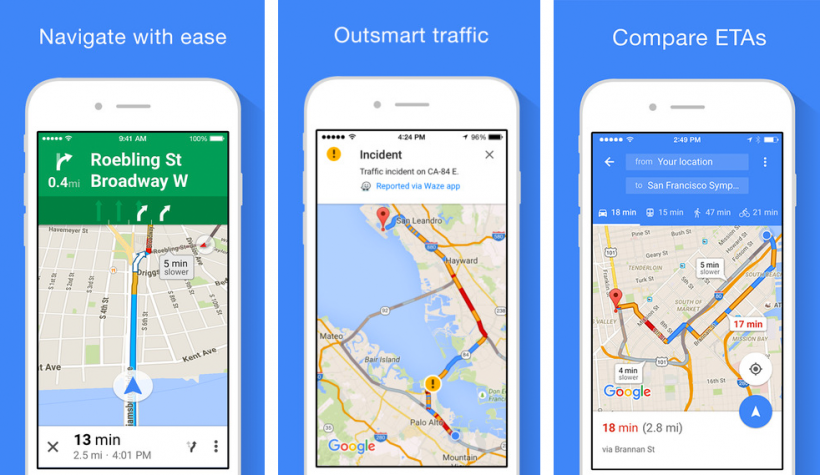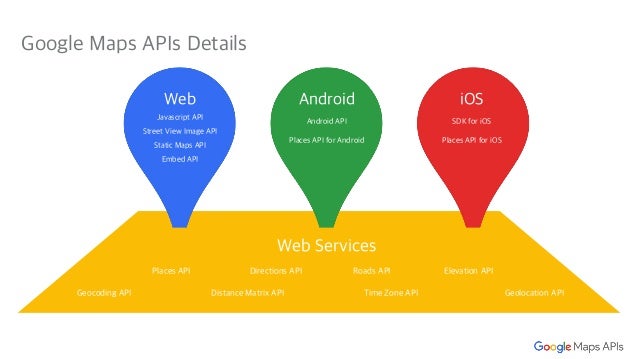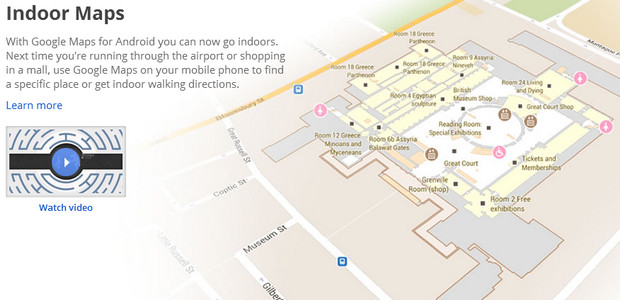Google Maps – the most expansive data machine

Over the years Google Maps have collected Billion of bytes of data to map the entire world. Increasing penetration of GPS-enabled smartphone has fueled Google’s appetite for data even further and it is putting all that data to good use.
Over the last decade or so, Google has dedicated enormous resources to build a searchable map for the entire earth. They have collected more than 20 Petabytes (20M+ GB) of data and are still collecting more information to constantly improve the maps. With over 1Bn+ monthly active users, Google Maps is one of the most used consumer application.
How was Google Maps built?

Over the years, Google has made many acquisitions to beef up its data portfolio and technology. Google uses a variety of sources to collect data including satellite imagery, geological surveys, municipality maps, third-party surveys and of course, street view cars (5M+ miles covered). They have built proprietary technology to combine all these disparate data sources together to generate the most accurate maps. Apart from technology, Google also employs a small army of people to manually correct the information collected from these different sources. Having done this for years, Maps has achieved a very high level of accuracy.

On top of the base layers of maps, Google has added many other capabilities including turn-by-turn navigation, business locations, search while navigation etc. The most intriguing of these features is the real-time traffic information. Google extensively uses data from its smartphone users to refine the traffic prediction. Google Maps App user constantly send anonymous bits of data to Google providing information like driver’s location, itinerary, speed etc. which allows Google to predict real-time traffic on a particular patch of a road around the world. The proliferation of GPS-enabled smartphone has tremendously increased the amount of data Google receives and by using complex algorithms, google is putting that data to predict traffic.
Creating value:
By mapping almost the entire world, Google has created tremendous value for its users. Gone are the days when users followed directions from a printed piece of paper. Google has made traveling anywhere extremely easy and hassle-free. With the additional feature like real-time traffic, Google nudges the users towards the most efficient route, thereby reducing the overall traffic in the system. Because of the superior user experience, over 1Bn users use Google maps on a monthly basis and are happy to share anonymous location information with Google, which in turn Google uses to make the user experience even better, creating a virtuous cycle. This strong data cycle along with the extensive investment made by Google in building the maps gives Google a clear edge over its competitors. Access to data from its Billion+ users has pushed the overall accuracy of Google maps to a level where it is extremely difficult for competitors to catch-up.
Capturing Value:
Google capture value primarily in three ways from Google Maps (a) Direct advertising in Google Maps (b) Indirect advertising across other Google products and (c) Google Maps API in 3rd party apps.

Because of so many eyeballs, Google maps offer a great opportunity for advertisers to capture user attention and advertise directly within the Google Maps. Brands can pay a fee for their logos to appear on Google Maps, helping brand recognition amongst its user base and driving traffic to the stores. Users also search for restaurants, coffee shops and other retail location on google maps, giving ample opportunity for advertisers to target and drive conversion.
Through Google Maps, all other Google products get access to user’s location history, making it easier for targetted advertising in other Google products as well. For example, looking at users driving behavior, Google can figure out the home and work location for particular users and then use that information to do targeted advt on Google search. Such synergy of data is possible as users share location information with Google for free usage of Google Maps.

Lastly, Google charges 3rd party app developers like Uber etc, to use Google maps in their native application through its Google Maps API product. App developers are willing to pay Google maps as the users are already familiar with the product and it is much more accurate than any other product.
Thus, by making a significant investment in constantly collecting data and analyzing it, Google has built an extremely successful product that not only creates value but captures it as well. The smartphone revolution has only fueled Google’s appetite for data making the Maps product much more valuable for its customers. The next wave in mapping would be indoors where GPS signals are not that effective. Google has already started making some progress in that arena but it will be interesting to see on how Google will effectively use the user data to build an even more accurate map of all things indoors.




Great post Anish. It seems like Google’s use of analytics and increasing accuracy is going to be key to their efforts in self driving cars, and they will continue to invest heavily in this. Seems like they are gaining so much of an edge over even well heeled competitors in the maps space like Apple, which anecdotally still seems vastly inferior. Their ability to do traffic and intelligent routing based on their more sophisticated analytics is key to this advantage.
Thanks for sharing, Anish! This would have been a great post for the crowd-sourcing assignment also as one other data source that drives Google Map’s high barriers to competition is the “local guides” function (https://www.google.com/local/guides/benefits/). To supplement its data-centric offerings, local guides provide photos, comments, and recommendations that increase the utility for users by adding the human element to Google Maps. As we have seen in several other scenarios, keeping the “art” in data-driven businesses is still important at this stage (i.e. scouts in football, buyers in Flashion) in technology development.
Anish – Good write-up about how Google Maps has leveraged various sources of data to achieve high level of accuracy. I often wonder what’s going to be the next big thing for google maps? Other than Waze acquisition (enabling real-time crowdsourced traffic data), targeting emerging markets (with light/low-bandwidth product) and integrating third party apps like Uber/Lyft, etc, how do you think Google Maps can create further value for its user / customers?
Great post Anish. Google Maps seems to enjoy a pretty strong competitive position (if not monopoly) thanks to their user base and data – I wonder wether you think Google Maps can be disrupted anytime soon and what are the key threats they may face? Do any of the upcoming technology trends (AR/VR, blockchain, etc) present an opportunity for a new player to break this monopoly and disrupt Google Maps?